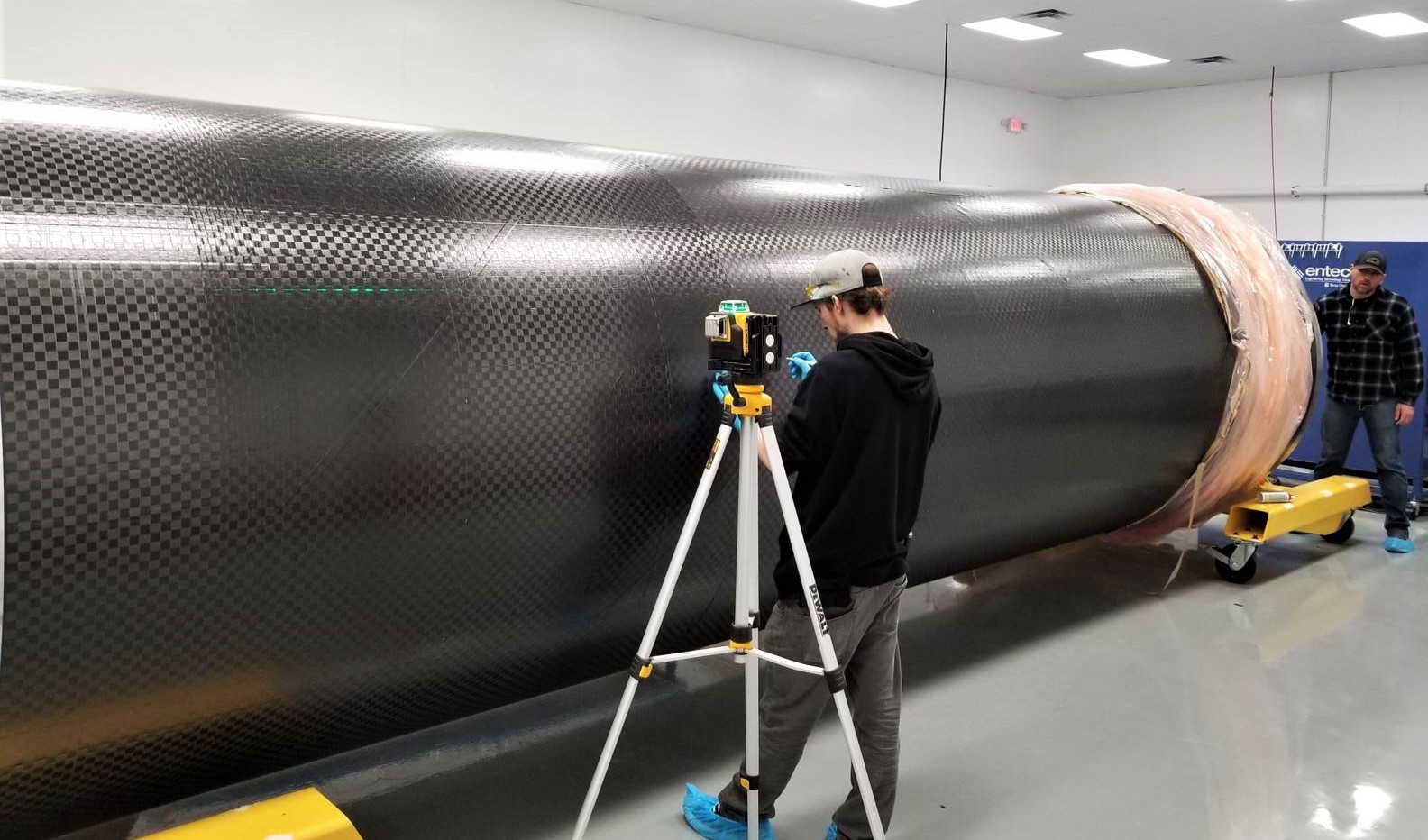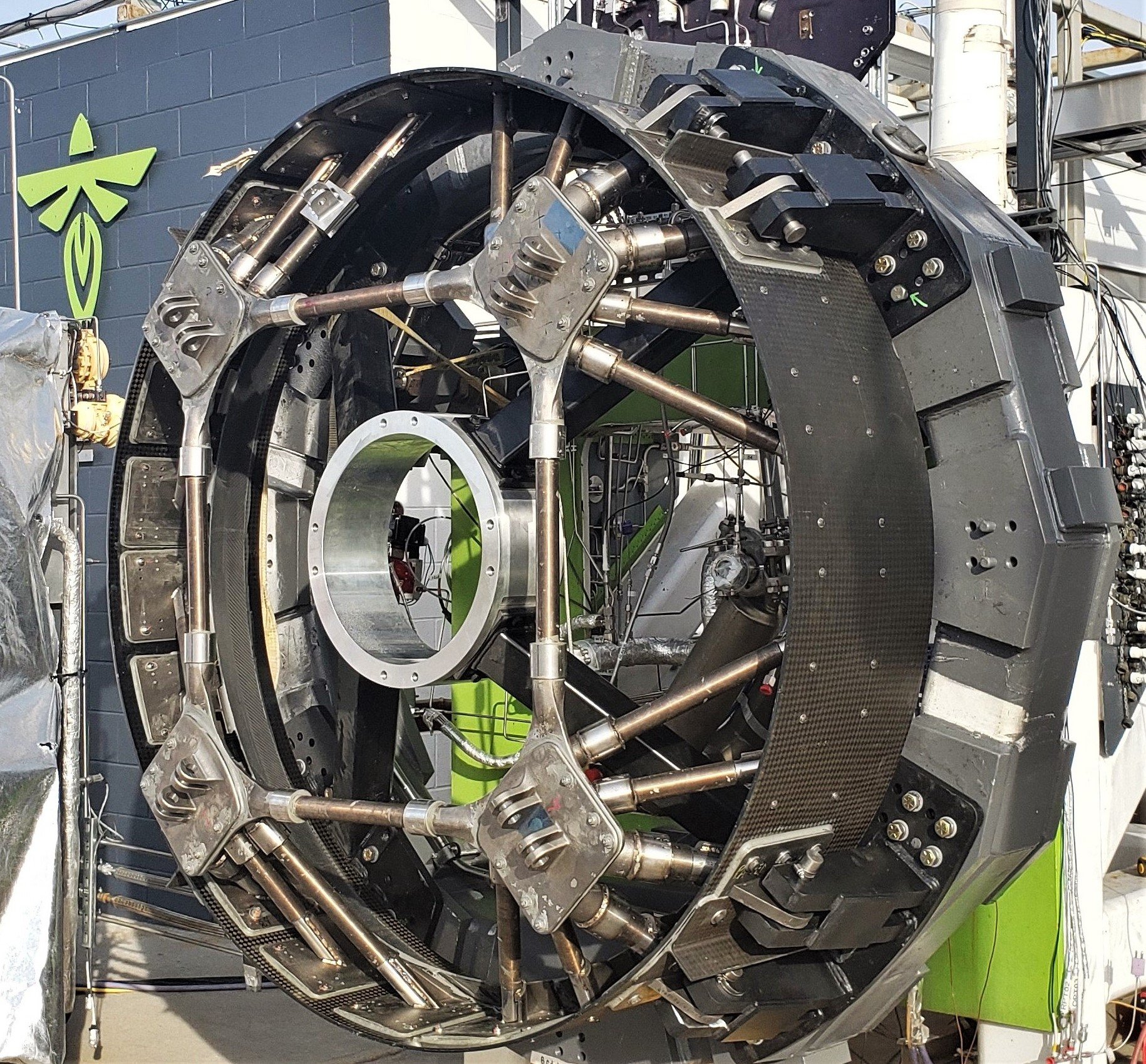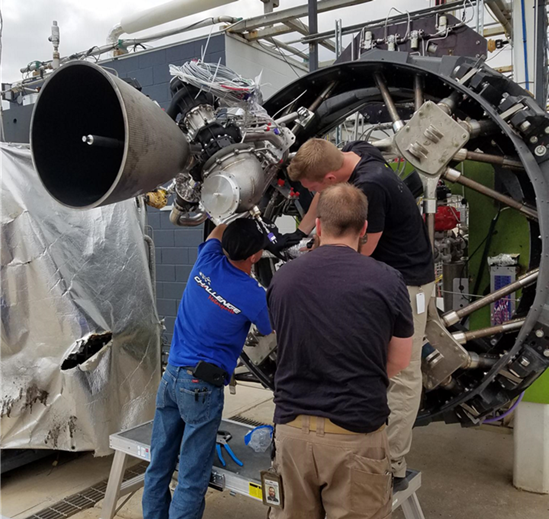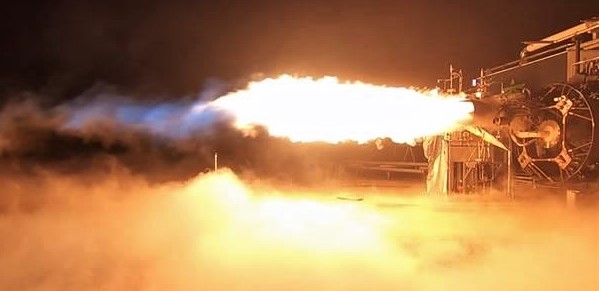News
DeepSpace: Firefly set for smallsat industry’s second place trophy, Rocket Lab leads the pack

This is a free preview of DeepSpace, Teslarati’s new member-only weekly newsletter. Each week, I’ll be taking a deep-dive into the most exciting developments in commercial space, from satellites and rockets to everything in between. Sign up for Teslarati’s newsletters here to receive a preview of our membership program.
In the race to a field dedicated smallsat launch vehicles, New Zealand startup Rocket Lab has already won first place, a fact that has been discussed several times in past Deep Space issues. After completing its first launch of 2019 on March 28th, Rocket Lab’s Electron rocket is ready for another mission as early as May 4th, a good sign for the company’s planned monthly launch cadence.
Despite Rocket Lab’s major success, there is plenty of room for additional competitors and/or complementary vehicles. Electron’s maximum payload hovers around ~225 kg (500 lb) to low Earth orbit (LEO), limiting its usefulness for any payloads that are larger than truly tiny satellites or in need of higher orbits. Also discussed on DeepSpace, there are 10+ serious startups with funding and hardware in work attempting to build said smallsat launch vehicles, ranging from the extremely tiny (Vector: 60 kg to LEO) to much larger rockets from companies like Relativity, ABL Space, and more. Firefly Space, however, is the startup that has arguably broken away from the pack in the last few months, firmly setting itself up to be second in line behind Rocket Lab.
Build, test, qualify
- Firefly’s major leaps forward came in December 2018 and then April 2019, both related to testing the completed upper stage of the company’s Alpha rocket.
- In December, the upper stage ignited for the first time. In April, the same upper stage successfully performed a mission-duration static fire that lasted a full 300 seconds (five minutes), the same length required for a rocket to reach orbit after separating from Alpha’s first stage.
- For any launch vehicle development program, the first successful mission-duration test fire of an integrated rocket stage is arguably one of the most important milestones, second only to the same hardware’s inaugural launch.

- Simultaneously, Firefly began integrated testing of the thrust section and Reaver engines that will be the basis of Alpha’s first stage. The rocket’s Lightning second stage engine has been tested extensively at this point in development, although the stage’s lone engine produces a maximum of ~70 kN (~16,000 lbf) of thrust.
- The booster’s four Reaver engines will each produce ~170 kN (55,000 lbf) of thrust, around three times as much as Lightning. Alpha’s second stage is critical, but its first stage is arguably far more complex.
- Despite the relative power differential, it’s still worth noting that Alpha’s entire first stage (736 kN/166,000 lbf) will be significantly less powerful than a single one of Falcon 9’s nine Merlin 1D engines (941 kN/212,000 lbf).
- Although Alpha is far smaller than rockets like Falcon 9 or Atlas V, it will nominally be capable of launching 1000 kg to an altitude of 200 km (LEO) or ~650 kg to a 500-km sun-synchronous orbit (SSO). This translates to around 4.2X the performance of Rocket Lab’s Electron at 2.5X the cost per launch ($15M vs $6M).
- Assuming no payload capacity is wasted, Alpha could thus be almost 50% cheaper than Electron when judged by cost per kilogram to orbit.
- Of course, this comparison ignores the fact that Firefly will have to far more heavily rely on booking co-passenger satellites to keep Alpha launch prices competitive with Electron.
- If exactly 1000kg or 630kg of cargo can’t be booked each launch, the expendable Alpha’s $15M launch cost will be distributed over less payload, raising costs for each customer. In other words, the competitive advantages of Alpha are almost entirely associated with its ability to launch payloads outside of Electron’s capabilities, as are its potential weaknesses.


Firefly Alpha’s upper stage qualification article (top) and a comparison of a variety of launch vehicles. (Teslarati)
The sweet spot
- In theory, Firefly Alpha’s could find itself in a relatively sweet spot, where the rocket’s launch costs are not so high that dedicated rideshare missions become intractable (i.e. Spaceflight’s SSO-A launch on Falcon 9) but its payload performance is still good enough to provide access to a huge swath of the space launch market.
- Firefly also has plans to develop a heavier launch vehicle based on Alpha, known as Beta. Conceptually equivalent to SpaceX’s Falcon Heavy, Beta would use three Alpha boosters and a significantly upgraded second stage and would be able to launch 4000 kg to LEO or 3000 kg to SSO.
- Regardless of Firefly’s grander aspirations, Alpha is poised to capitalize on the simple fact that it will be the second commercially viable smallsat launch vehicle to begin operations. Alpha’s first orbital launch attempt could occur as early as December 2019, although slips into early 2020 are to be expected.
- At that point, Rocket Lab’s Electron will be the only serious competition on the market. Relativity’s Terran and ABL Space’s RS-1 rockets plan to offer a competitive ~1250 kg to LEO or ~900 kg to SSO, but their launch debuts are tentatively scheduled no earlier than late 2020.
- If Alpha’s development continues smoothly, Firefly could easily have a solid 12-month head start over its similarly-sized competitors,
- Up next for Alpha is a similar campaign of tests focused on the first integrated booster, including tests fires and an eventual mission-duration qualification test.
Mission Updates
- SpaceX’s CRS-17 Cargo Dragon resupply mission has slipped an additional four days from April 30th to May 3rd (3:11 am EDT, 07:11 UTC) after the International Space Station (ISS) began suffering serious (but non-threatening) electrical issues. Additional launch delays could follow if the issue is not resolved in the next few days.
- The first operational Starlink launch remains firmly on track for NET mid-May. According to SpaceX, all Flight 1 satellites are already in Florida, while the FCC approved the company’s modified constellation license – permitting Starlink operations after launch – on April 26th.
- Due to CRS-17’s launch delays, the availability of SpaceX’s LC-40 pad will now likely be the main limiting factor for the Starlink-1 launch date.
- SpaceX’s second West Coast launch of 2019 – carrying Canada’s Radarsat Constellation – is now expected to occur no earlier than mid-June and will reuse Falcon 9 B1051.
- SpaceX’s launch of Spacecom’s Amos-17 spacecraft is now scheduled no earlier than July. Falcon Heavy Flight 3 is tentatively scheduled for launch as early as June 22 – all three boosters should be on site in Florida within the next week or two.
Photo of the Week:

(SpaceX)
The third Falcon Heavy center core – believed to be B1057 – was spotted eastbound in Arizona on April 16th. On April 26th, SpaceX confirmed that the booster completed its acceptance static fire test at the company’s McGregor, TX facilities, a sure sign that all of Falcon Heavy Flight 3’s major components should be in Florida within the next few weeks.
We’ll see you next week.
Not a member? Become a member today to receive DeepSpace each week!

News
Tesla FSD V14.2.1 is earning rave reviews from users in diverse conditions
Tesla’s Full Self-Driving (Supervised) software continues its rapid evolution, with the latest V14.2.1 update drawing widespread praise.

Tesla’s Full Self-Driving (Supervised) software continues its rapid evolution, with the latest V14.2.1 update drawing widespread praise for its smoother performance and smarter decision-making.
Videos and firsthand accounts from Tesla owners highlight V14.2.1 as an update that improves navigation responsiveness, sign recognition, and overall fluidity, among other things. Some drivers have even described it as “more alive than ever,” hinting at the system eventually feeling “sentient,” as Elon Musk has predicted.
FSD V14.2.1 first impressions
Early adopters are buzzing about how V14.2.1 feels less intrusive while staying vigilant. In a post shared on X, Tesla owner @LactoseLunatic described the update as a “huge leap forward,” adding that the system remains “incredibly assertive but still safe.”
Another Tesla driver, Devin Olsenn, who logged ~600 km on V14.2.1, reported no safety disengagements, with the car feeling “more alive than ever.” The Tesla owner noted that his wife now defaults to using FSD V14, as the system is already very smooth and refined.
Adverse weather and regulatory zones are testing grounds where V14.2.1 shines, at least according to testers in snow areas. Tesla watcher Sawyer Merritt shared a video of his first snowy drive on unplowed rural roads in New Hampshire, where FSD did great and erred on the side of caution. As per Merritt, FSD V14.2.1 was “extra cautious” but it performed well overall.
Sign recognition and freeway prowess
Sign recognition also seemed to show improvements with FSD V14.2.1. Longtime FSD tester Chuck Cook highlighted a clip from his upcoming first-impressions video, showcasing improved school zone behavior. “I think it read the signs better,” he observed, though in standard mode, it didn’t fully drop to 15 mph within the short timeframe. This nuance points to V14.2.1’s growing awareness of temporal rules, a step toward fewer false positives in dynamic environments.
FSD V14.2.1 also seems to excel in high-stress highway scenarios. Fellow FSD tester @BLKMDL3 posted a video of FSD V14.2.1 managing a multi-lane freeway closure due to a police chase-related accident. “Perfectly handles all lanes of the freeway merging into one,” the Tesla owner noted in his post on X.
FSD V14.2.1 was released on Thanksgiving, much to the pleasant surprise of Tesla owners. The update’s release notes are almost identical to the system’s previous iteration, save for one line item read, “Camera visibility can lead to increased attention monitoring sensitivity.”
News
Tesla FSD Supervised ride-alongs in Europe begin in Italy, France, and Germany
The program allows the public to hop in as a non-driving observer to witness FSD navigate urban streets firsthand.

Tesla has kicked off passenger ride-alongs for Full Self-Driving (Supervised) in Italy, France and Germany. The program allows the public to hop in as a non-driving observer to witness FSD navigate urban streets firsthand.
The program, detailed on Tesla’s event pages, arrives ahead of a potential early 2026 Dutch regulatory approval that could unlock a potential EU-wide rollout for FSD.
Hands-Off Demos
Tesla’s ride-along invites participants to “ride along in the passenger seat to experience how it handles real-world traffic & the most stressful parts of daily driving, making the roads safer for all,” as per the company’s announcement on X through its official Tesla Europe & Middle East account.
Sign-ups via localized pages offer free slots through December, with Tesla teams piloting vehicles through city streets, roundabouts and highways.
“Be one of the first to experience Full Self-Driving (Supervised) from the passenger seat. Our team will take you along as a passenger and show you how Full Self-Driving (Supervised) works under real-world road conditions,” Tesla wrote. “Discover how it reacts to live traffic and masters the most stressful parts of driving to make the roads safer for you and others. Come join us to learn how we are moving closer to a fully autonomous future.”
Building trust towards an FSD Unsupervised rollout
Tesla’s FSD (Supervised) ride-alongs could be an effective tool to build trust and get regular car buyers and commuters used to the idea of vehicles driving themselves. By seating riders shotgun, Tesla could provide participants with a front row seat to the bleeding edge of consumer-grade driverless systems.
FSD (Supervised) has already been rolled out to several countries, such as the United States, Canada, Australia, New Zealand, and partially in China. So far, FSD (Supervised) has been received positively by drivers, as it really makes driving tasks and long trips significantly easier and more pleasant.
FSD is a key safety feature as well, which became all too evident when a Tesla driving on FSD was hit by what seemed to be a meteorite in Australia. The vehicle moved safely despite the impact, though the same would likely not be true had the car been driven manually.
News
Swedish union rep pissed that Tesla is working around a postal blockade they started
Tesla Sweden is now using dozens of private residences as a way to obtain license plates for its vehicles.

Two years into their postal blockade, Swedish unions are outraged that Tesla is still able to provide its customers’ vehicles with valid plates through various clever workarounds.
Seko chairman Gabriella Lavecchia called it “embarrassing” that the world’s largest EV maker, owned by CEO Elon Musk, refuses to simply roll over and accept the unions’ demands.
Unions shocked Tesla won’t just roll over and surrender
The postal unions’ blockade began in November 2023 when Seko and IF Metall-linked unions stopped all mail to Tesla sites to force a collective agreement. License plates for Tesla vehicles instantly became the perfect pressure point, as noted in a Dagens Arbete report.
Tesla responded by implementing initiatives to work around the blockades. A recent investigation from Arbetet revealed that Tesla Sweden is now using dozens of private residences, including one employee’s parents’ house in Trångsund and a customer-relations staffer’s home in Vårby, as a way to obtain license plates for its vehicles.
Seko chairman Gabriella Lavecchia is not pleased that Tesla Sweden is working around the unions’ efforts yet again. “It is embarrassing that one of the world’s largest car companies, owned by one of the world’s richest people, has sunk this low,” she told the outlet. “Unfortunately, it is completely frivolous that such a large company conducts business in this way.”
Two years on and plates are still being received
The Swedish Transport Agency has confirmed Tesla is still using several different workarounds to overcome the unions’ blockades.
As noted by DA, Tesla Sweden previously used different addresses to receive its license plates. At one point, the electric vehicle maker used addresses for car care shops. Tesla Sweden reportedly used this strategy in Östermalm in Stockholm, as well as in Norrköping and Gothenburg.
Another strategy that Tesla Sweden reportedly implemented involved replacement plates being ordered by private individuals when vehicles change hands from Tesla to car buyers. There have also been cases where the police have reportedly issued temporary plates to Tesla vehicles.













